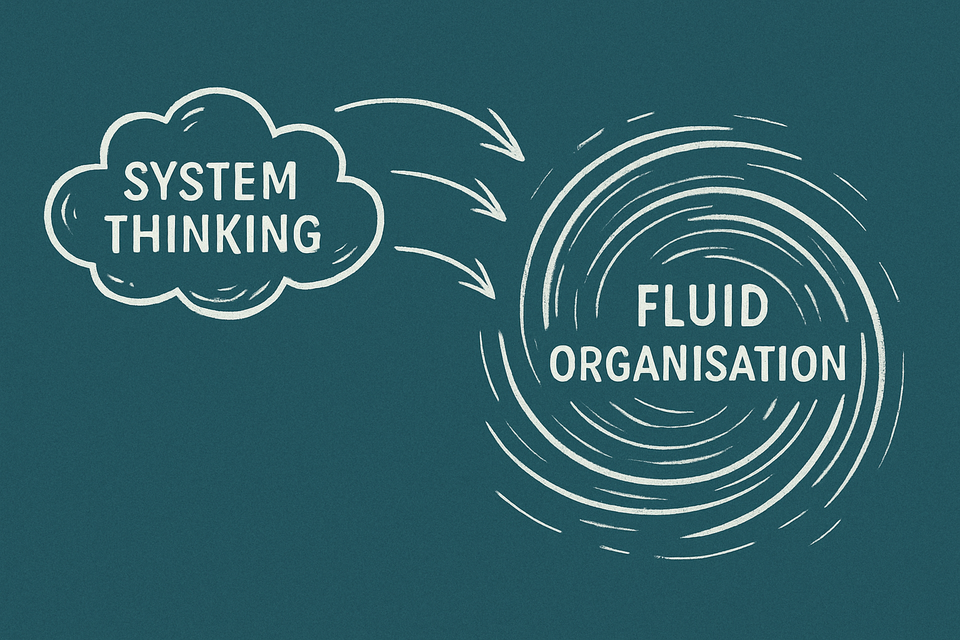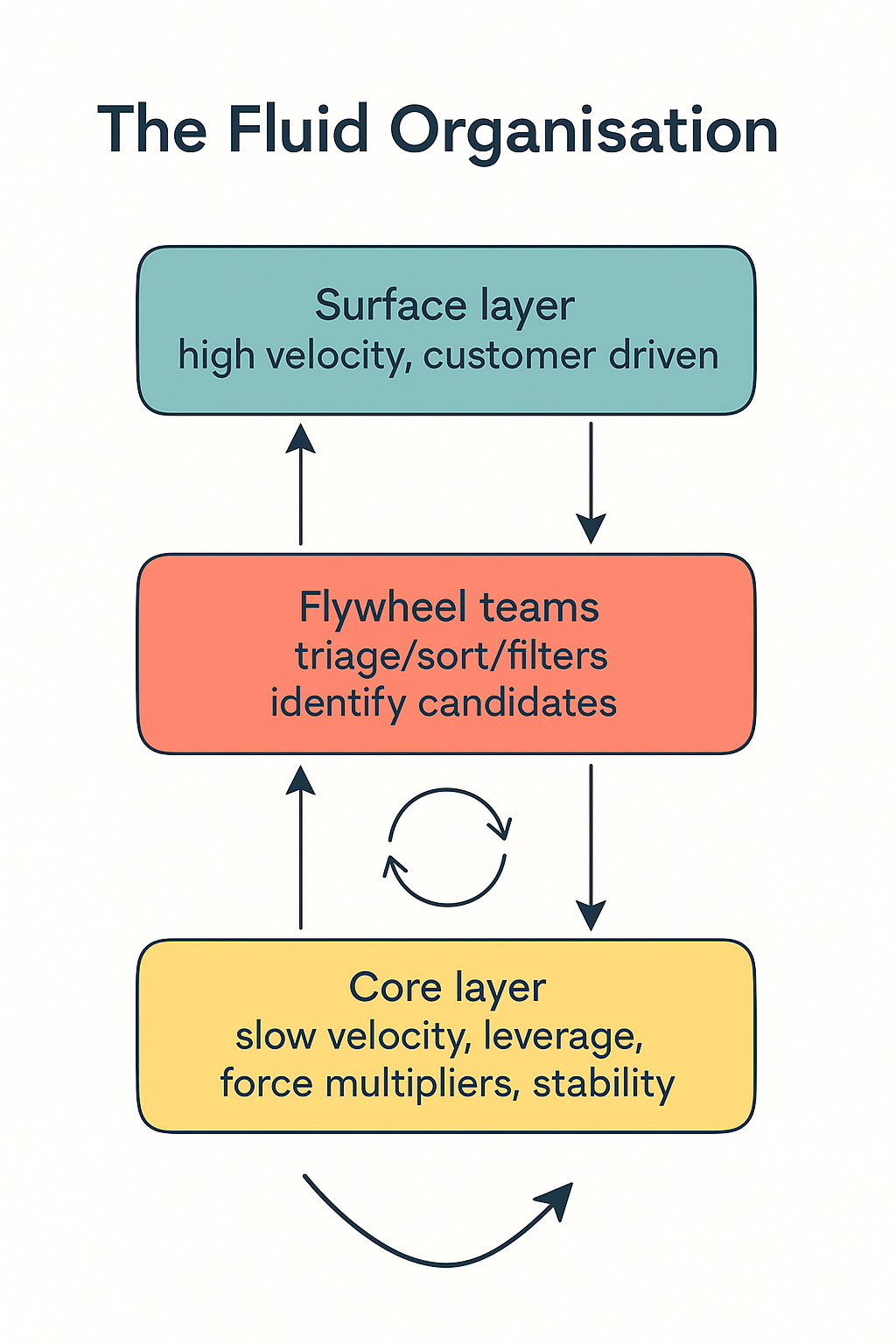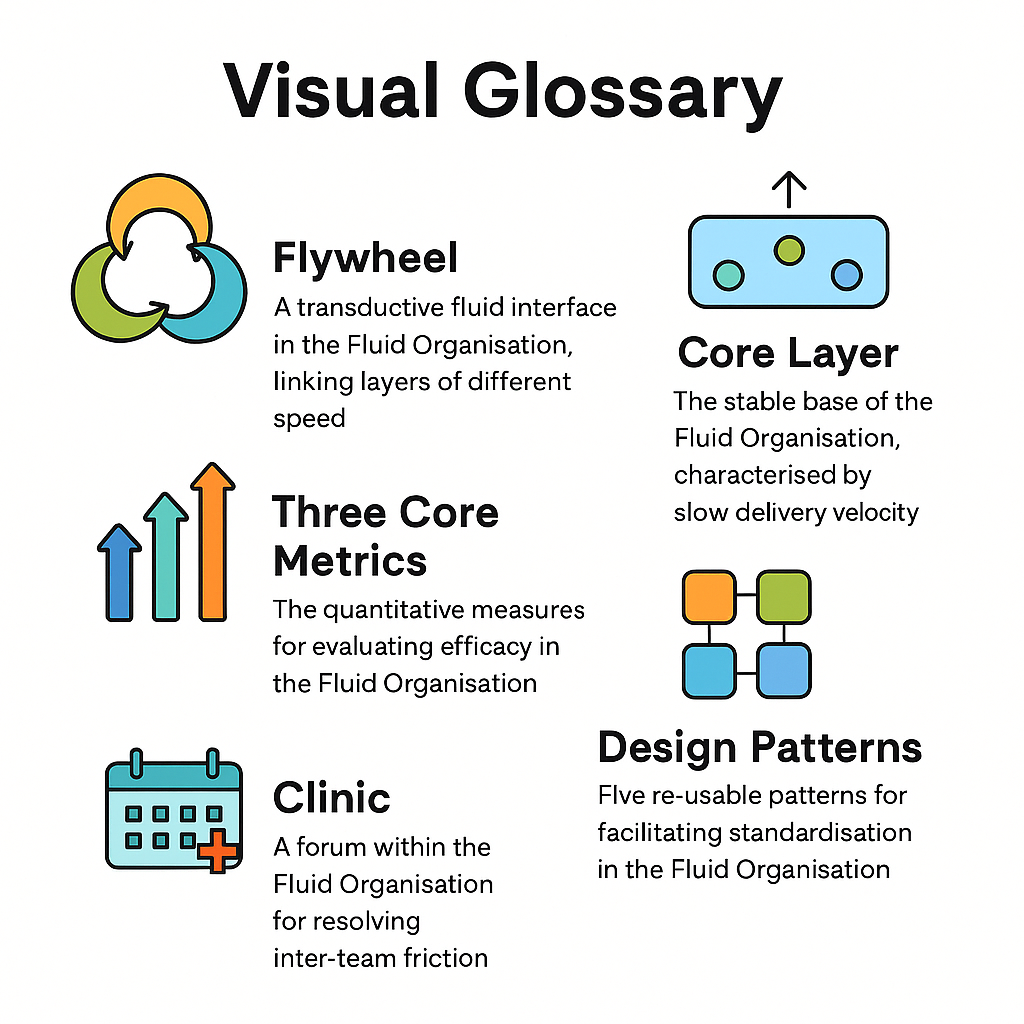Systems Thinking in the Fluid Organisation

Introduction
The Fluid Organisation Model is a structural response to fragmentation in fast-moving environments. It is built on three strata of organisational motion:
- Surface: Fast-moving product and discovery teams
- Flywheel: A dynamic, adaptive interface that filters signal, absorbs entropy, and produces reusable capability
- Core: Stable platform and infrastructure layers designed for scale

To guide systemic alignment across these layers, the model introduces three key metrics:
- Org Re: Measures delivery-induced turbulence
- TQS: Scores the fidelity of reuse and capability transduction
- Entropic Pressure: Captures structural strain from unmanaged change
These metrics are made actionable through reusable Flywheel Patterns such as:
- Shadow Integrators: Embedded signal extractors
- Signal Clinics: Live triage sessions
- Pattern Shepherds: Curators of emergent convergence
- Reuse Jams: Thematic reuse acceleration events
- Flow Cells: Temporary teams managing high-entropy domains

But beneath its patterns, metrics, and interfaces lies something deeper: it behaves like a system.
This article maps concepts from systems thinking, especially those articulated by Donella Meadows, onto the architecture of the Fluid Organisation. The goal is not to admire the model but to sharpen it. By aligning with systemic principles, the Fluid Organisation becomes not just adaptive, but teachable, diagnosable, and extensible.
1. Leverage Points → Patterns and Metrics
Meadows defined leverage points as places within a system where a small shift can produce big change. The Fluid Organisation manifests this in two forms:
- Patterns like Signal Clinics and Flow Cells act as structural leverage: they reshape flow without requiring wholesale reorganisation.
- Metrics like Org Re and TQS serve as informational leverage: they shift awareness, which in turn shifts behaviour.
These are where we intervene, not randomly, but intentionally.
2. Feedback Loops → Innovation vs Reuse Dynamics
Systems are shaped by reinforcing and balancing loops. In the Fluid Organisation:
- Fast delivery creates a reinforcing loop : more features, more pressure.
- The Flywheel introduces balancing loops : reuse, clinics, feedback reduce chaos and stabilise motion.
Understanding which loops dominate is key to intervention.
3. Stocks and Flows → Structural Maturity and Velocity
- A stock is what accumulates: reusable assets, interface maturity.
- A flow is the rate of change: adoption, demand, or signal volume.
The Flywheel exists to regulate these flows : preventing delivery outpacing structure.
4. Purpose vs Goal → What the System Really Optimises For
Stated goals are not always real goals. Systems reveal their purpose by what they produce.
- If governance slows down reuse, the purpose might be risk avoidance, not enablement.
- If no team refines paved paths, the system may be optimising for autonomy, not convergence.
The Flywheel allows these tensions to surface by making friction measurable.
5. Delays → Feedback Latency and Friction
Long feedback delays distort response. The longer signal takes to be triaged, the more the system fragments.
- Signal Clinics shorten this delay.
- Reuse Jams and Pattern Shepherds pre-empt drift.
Feedback speed is health.
6. Boundaries and Permeability → Interface Maturity
What is inside the system? What is outside? How do teams interact?
- Interface Maturity defines the strength and permeability of organisational boundaries.
- Low maturity = signal leakage and frustration.
Flywheel structures act as semi-permeable membranes, modulating pressure, not resisting it.
Conclusion: A System, Not a Stack
The Fluid Organisation is not a rigid model. It is a living system. One that reacts to tension, regulates entropy, and evolves by structure.
By grounding the model in systems thinking, we gain not only language, but diagnostic clarity. We do not optimise for certainty. We build for resilience.





Member discussion